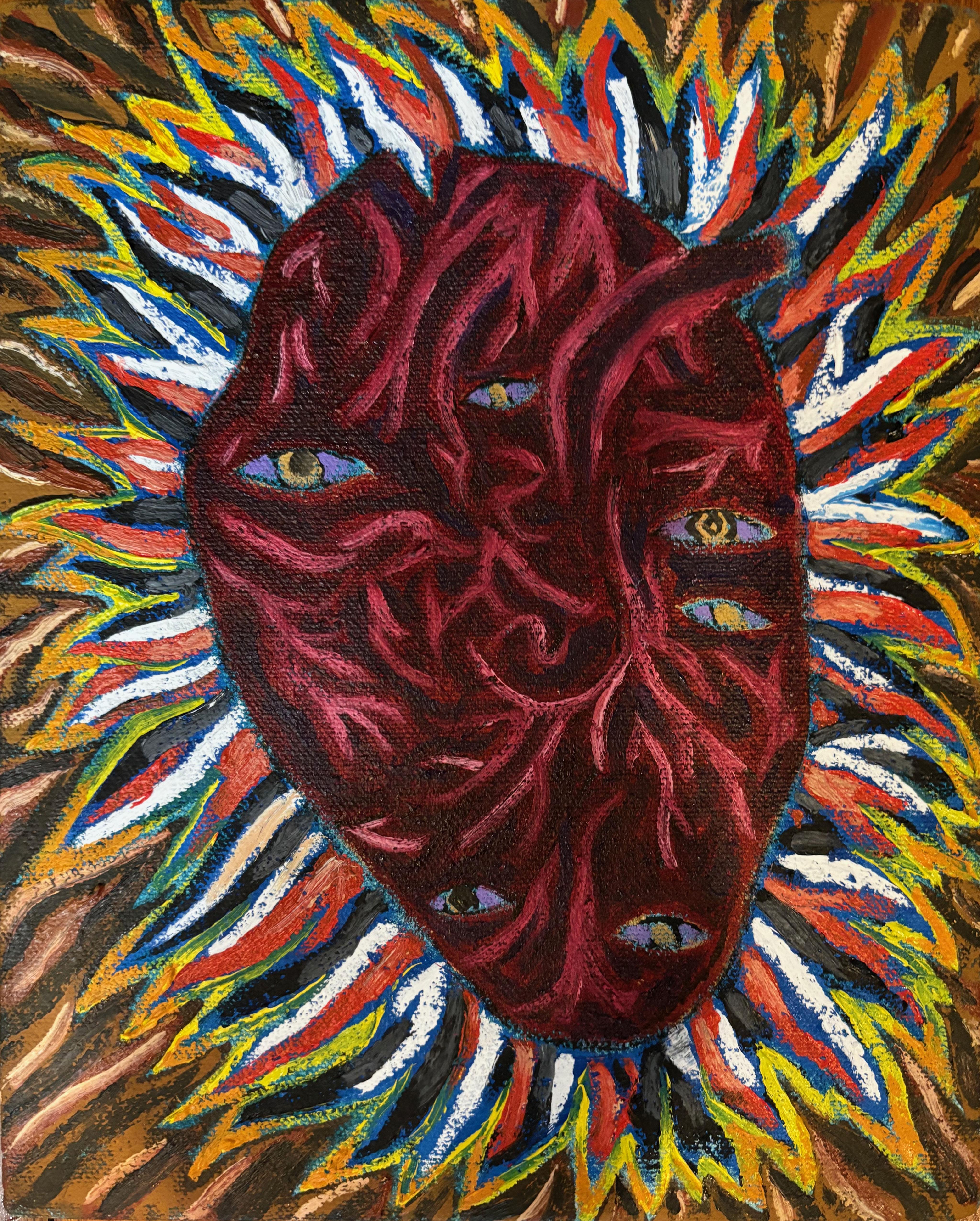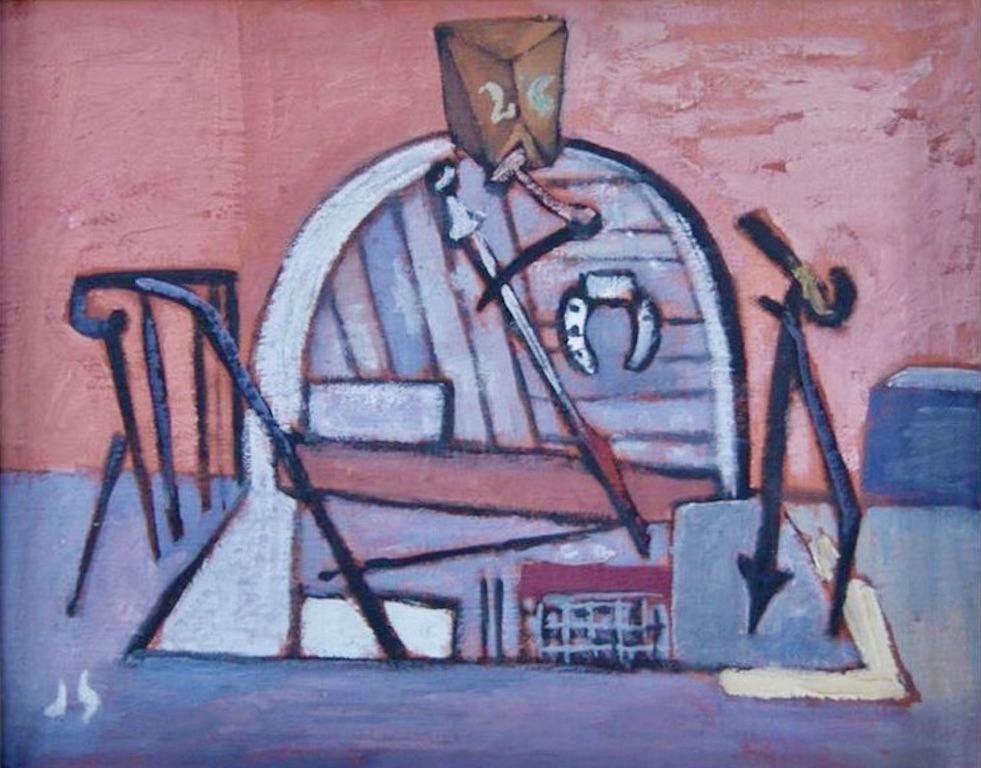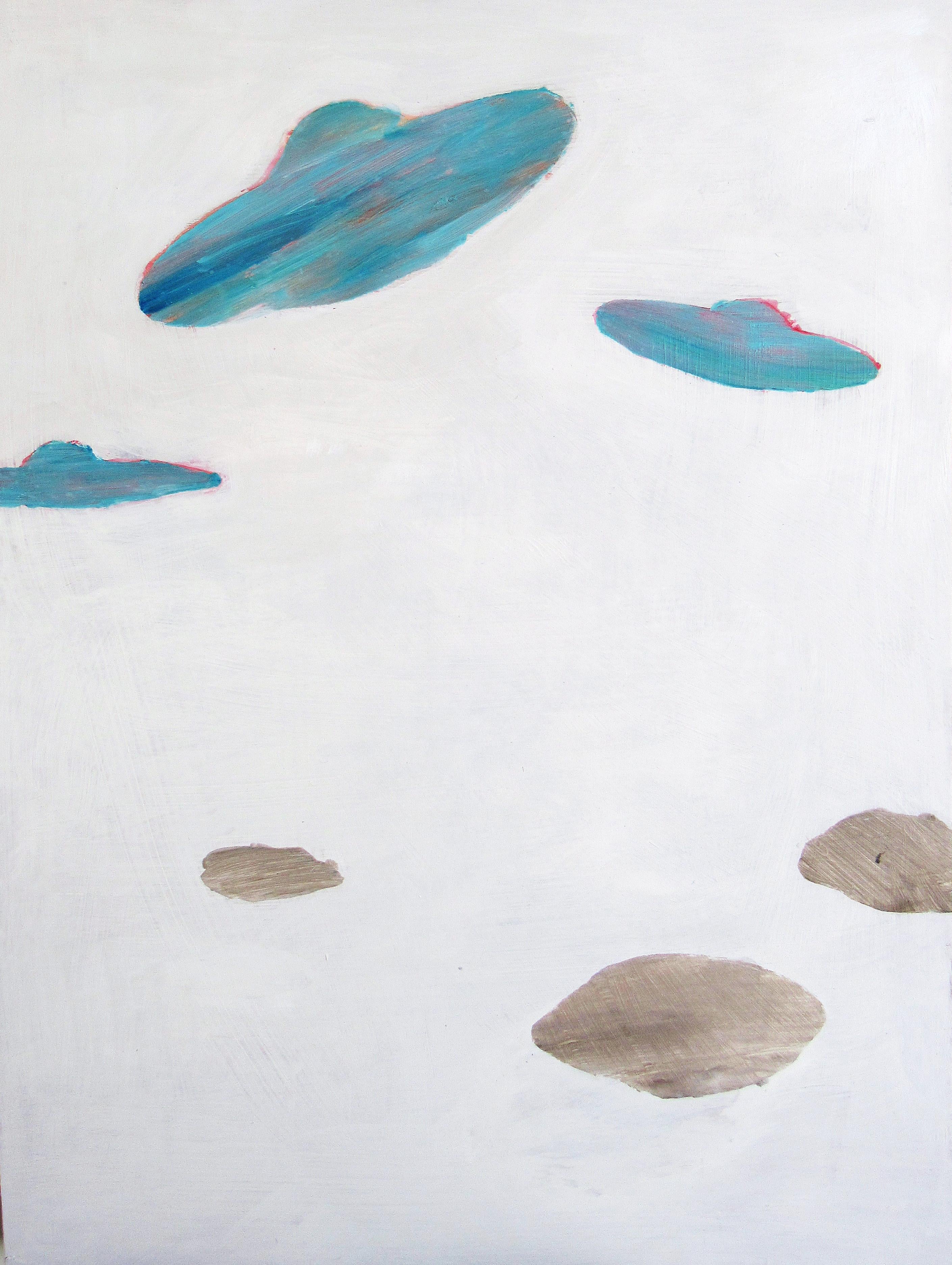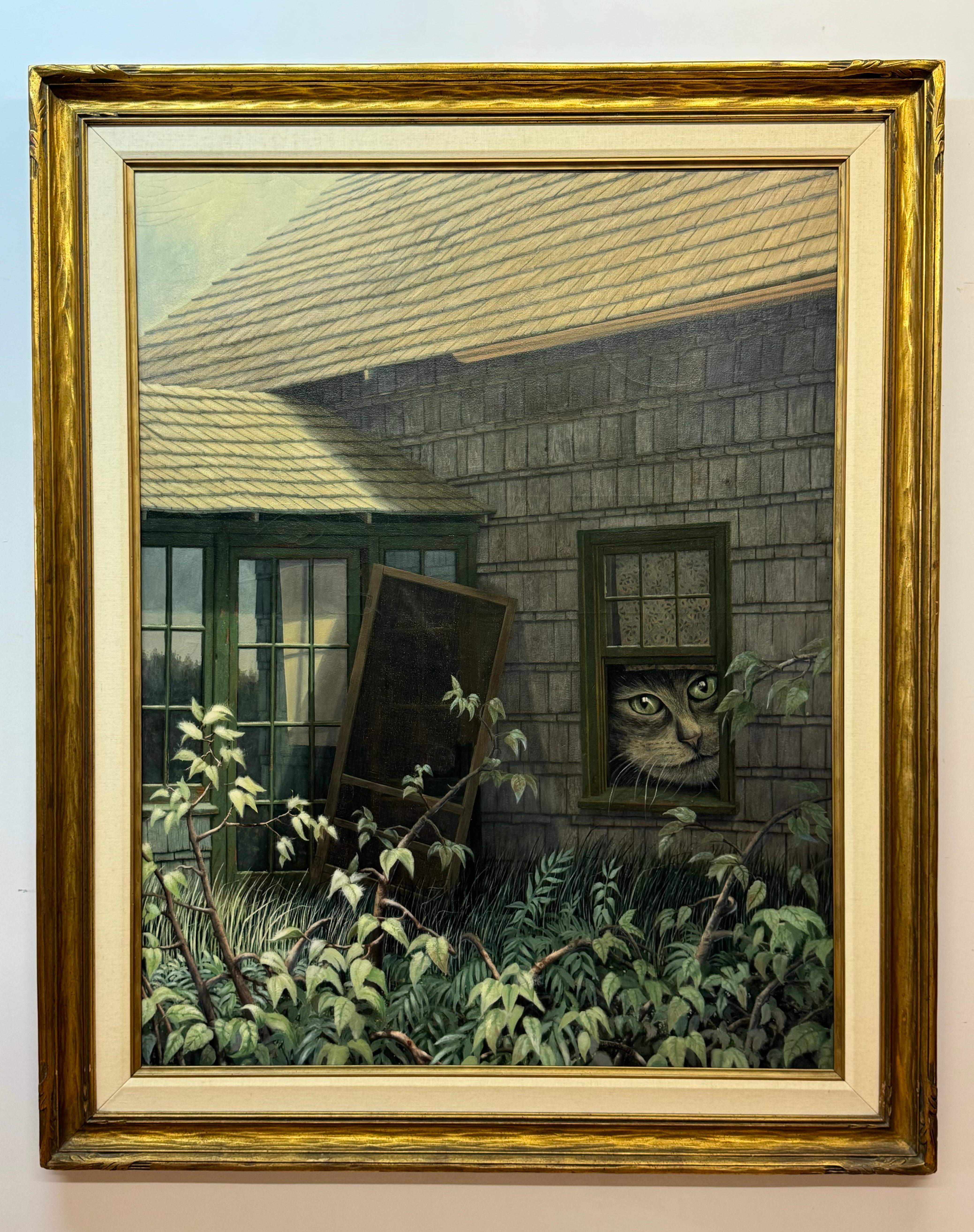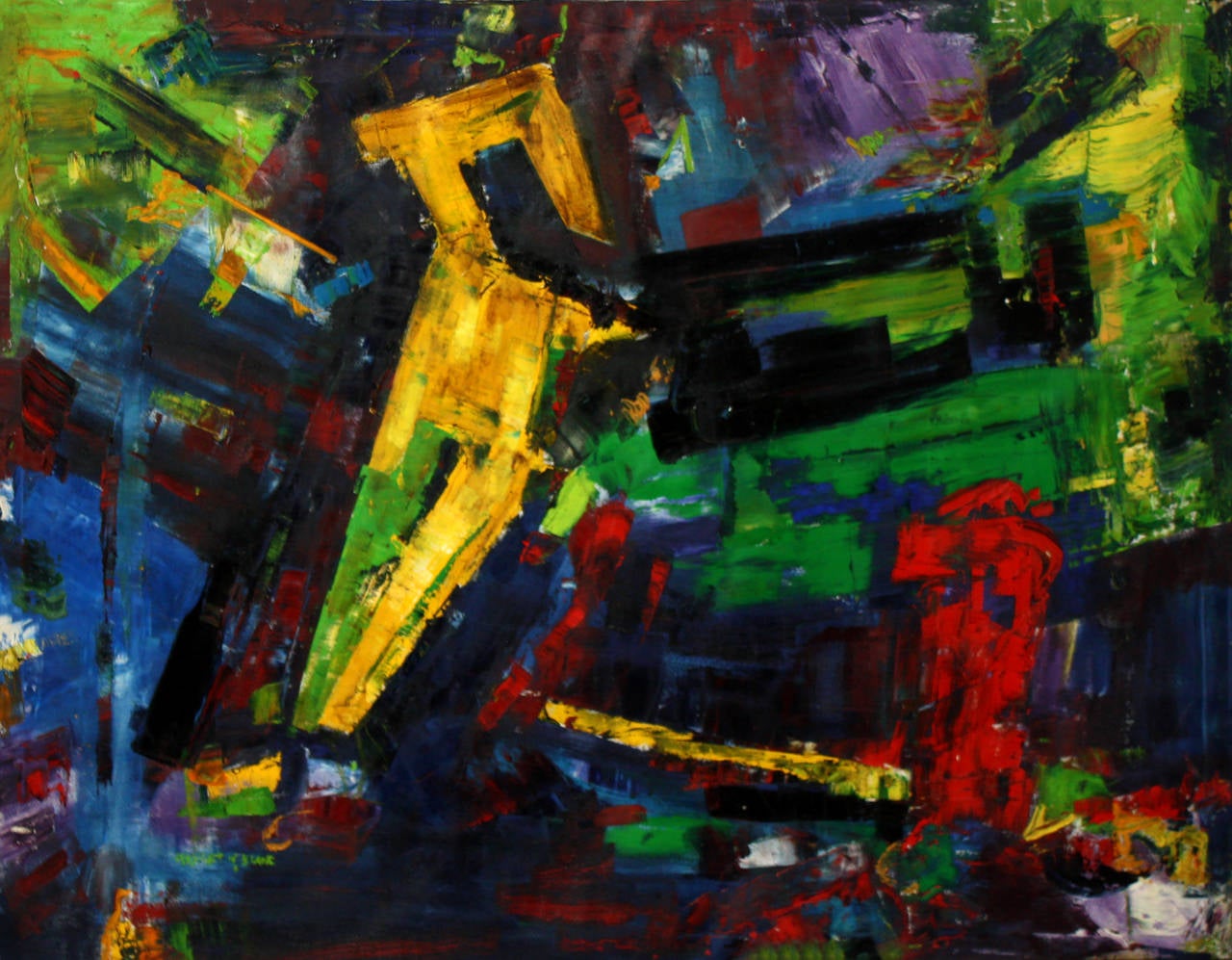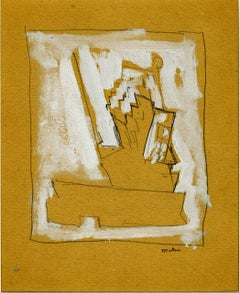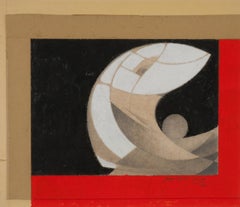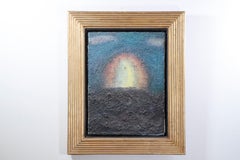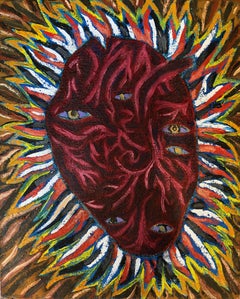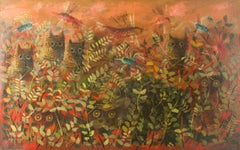
Hiding to Look
View Similar Items
Want more images or videos?
Request additional images or videos from the seller
1 of 10
Julio de DiegoHiding to Look1944
1944
About the Item
- Creator:Julio de Diego (1900-1979, American)
- Creation Year:1944
- Dimensions:Height: 30 in (76.2 cm)Width: 48 in (121.92 cm)
- Medium:
- Movement & Style:
- Period:
- Condition:Original.
- Gallery Location:Fairlawn, OH
- Reference Number:Seller: FA84901stDibs: G130930140266
About the Seller
5.0
Recognized Seller
These prestigious sellers are industry leaders and represent the highest echelon for item quality and design.
Platinum Seller
These expertly vetted sellers are 1stDibs' most experienced sellers and are rated highest by our customers.
Established in 1978
1stDibs seller since 2013
711 sales on 1stDibs
Typical response time: 1 hour
Associations
International Fine Print Dealers Association
More From This SellerView All
- Study for Mid-Manhattan IIBy John MarinLocated in Fairlawn, OHStudy for Mid-Manhattan II Oil and graphite on paper, mounted to board, 1932 Signed by the artist in pencil lower right Sight size: 8 1/2 x 7 inches One of a series of studies for th...Category
1930s American Modern Abstract Paintings
MaterialsOil
- Interieur No. IIBy Benjamin G. BennoLocated in Fairlawn, OHInterieur No. II Oil on canvas, 1937 Signed on verso (see photo) nscribed on reverse: Benno 1937 "Interieur" (No. II) 35 x 27 cm 9 rue Compagne Premiere Paris 14e Provenance: Estate of the artist Ruth O...Category
1930s American Modern Paintings
MaterialsCanvas, Oil
- #90 Strange CreatureBy Norbert LenzLocated in Fairlawn, OH#90 Strange Creature Oil and pencil on board, 1932 Signed and dated in the image lower right (see photo) Provenance: Joseph M. Erdelac, Cleveland, OH Condition: excellent Archival framing Image size: 10 1/2 x 11 3/4 inches Frame size: 25 x 24 inches Painter, illustrator and commercial artist Norbert Lenz was born in Norwalk, Ohio and received his artistic training at both the Huntington Polytechnic Institute and the Cleveland School of Art. During his career Lenz exhibited his paintings and drawings at such institutions as the Pennsylvania Academy of Fine Art, the Art Institute of Chicago, the Cleveland Museum of Art and the Butler Institute of American Art. Today the art of Norbert Lenz is held by the Columbus Museum of Art, the Cleveland Museum of Art and the Butler Institute of American Art. Lenz was also a very highly regarded commercial designer of stamps. He worked for a number of years at the House of Farman, a leading vendor of first day covers...Category
1930s American Modern Abstract Paintings
MaterialsOil
- Arctic Light - Orange SunBy Karl ZerbeLocated in Fairlawn, OHArctic Light-Orange Sun Unsigned Gouache on Japanese fibrous paper Series: Tundra Paintings Exhibited: Karl Zerbe, Gouaches of the Artic Nordness Gallery, (Madison Avenue, NY) Feb 3 through Feb 23, 1958 Cat. No. 12 (label with work, see photo...Category
1950s American Modern Abstract Paintings
MaterialsGouache
- PersephoneBy Virginia DehnLocated in Fairlawn, OHPersephone Oil on canvas, 1952 Signed lower left (see photo) Titled reverse "Persephone" Signed "V. 52" Exhibited: Columbus Gallery of the Arts label "71/30 Bt. 2", see label Condition: two very small flakes of missing paint Canvas size: 20 1/8 x 16" Frame size: 20 7/8 x 16 3/4" Provenance: Estate of the artist Dehn Heirs An important painting by the artist. Virginia Dehn From Wikipedia, the free encyclopedia Virginia Dehn (1922-2005) Virginia Dehn (née Engleman) (October 26, 1922 – July 28, 2005) was an American painter and printmaker. Her work was known for its interpretation of natural themes in almost abstract forms. She exhibited in shows and galleries throughout the U.S. Her paintings are included in many public collections. Life Dehn was born in Nevada, Missouri on October 26, 1922.] Raised in Hamden, Connecticut, she studied at Stephens College in Columbia, Missouri before moving to New York City. She met the artist Adolf Dehn while working at the Art Students League. They married in November 1947. The two artists worked side by side for many years, part of a group of artists who influenced the history of 20th century American art. Their Chelsea brownstone was a place where artists, writers, and intellectuals often gathered. Early career Virginia Dehn studied art at Stephens College in Missouri before continuing her art education at the Traphagen School of Design, and, later, the Art Students League, both located in New York City. In the mid-1940s while working at the Associated American Artists gallery, she met lithographer and watercolorist Adolf Dehn. Adolf was older than Virginia, and he already enjoyed a successful career as an artist. The two were married in 1947 in a private ceremony at Virginia's parents house in Wallingford, Connecticut. Virginia and Adolf Dehn The Dehns lived in a Chelsea brownstone on West 21st Street where they worked side by side. They often hosted gatherings of other influential artists and intellectuals of the 20th century. Among their closest friends were sculptor Federico Castellón and his wife Hilda; writer Sidney Alexander and his wife Frances; artists Sally and Milton Avery; Ferol and Bill Smith, also an artist; and Lily and Georges Schreiber, an artist and writer. Bob Steed and his wife Gittel, an anthropologist, were also good friends of the Dehns. According to friend Gretchen Marple Pracht, "Virginia was a glamorous and sophisticated hostess who welcomed visitors to their home and always invited a diverse crowd of guests..." Despite their active social life, the two were disciplined artists, working at their easels nearly daily and taking Saturdays to visit galleries and view new work. The Dehns made annual trips to France to work on lithographs at the Atelier Desjobert in Paris. Virginia used a bamboo pen to draw directly on the stone for her lithographs, which often depicted trees or still lifes. The Dehns' other travels included visits to Key West, Colorado, Mexico, and countries such as Greece, Haiti, Afghanistan, and India. Dehn's style of art differend greatly from that of her husband, though the two sometimes exhibited together. A friend of the couple remarked, "Adolf paints landscapes; Virginia paints inscapes." Virginia Dehn generally painted an interior vision based on her feelings for a subject, rather than a literal rendition of it.] Many of her paintings consist of several layers, with earlier layers showing through. She found inspiration in the Abstract Expressionism movement that dominated the New York and Paris art scenes in the 1950s. Some of her favorite artists included Adolf Gottileb, Rothko, William Baziotes, Pomodoro, and Antonio Tapies. Dehn most often worked with bold, vibrant colors in large formats. Her subjects were not literal, but intuitive. She learned new techniques of lithography from her husband Adolf, and did her own prints. Texture was very important to her in her work. Her art was influenced by a variety of sources. In the late 1960s she came across a book that included photographs of organic patterns of life as revealed under a microscope. These images inspired her to change the direction of some of her paintings. Other influences on Dehn's art came from ancient and traditional arts of various cultures throughout the world, including Persian miniatures, illuminated manuscripts, Dutch still life painting, Asian art, ancient Egyptian artifacts...Category
1950s American Modern Abstract Paintings
MaterialsAcrylic
- PersephoneBy Virginia DehnLocated in Fairlawn, OHPersephone Oil on canvas, 1952 Signed lower left (see photo) Titled reverse "Persephone" Signed "V. 52" Exhibited: Columbus Gallery of the Arts label "71/30 Bt. 2", see label Condi...Category
1950s American Modern Abstract Paintings
MaterialsAcrylic
You May Also Like
- Moon Glow by Robert TerryLocated in Brookville, NYBorn 1955 in Broken Bow, Nebraska. Lives and works in New York. AWARDS National Endowment for the Arts, Major Grant Robert Terry was best noted in his depictions of romantic moons...Category
1990s American Modern Landscape Paintings
MaterialsOil
- Sunset portraitsBy FPA Francis Pavy ArtistLocated in Lafayette, LAThis small painting is entitled Sunset Portraits. It's an oil painting on canvas mounted on wood. The painting depicts a man's silhouette formed by fl...Category
2010s American Modern Abstract Paintings
MaterialsOil
- DARK HEARTBy FPA Francis Pavy ArtistLocated in Lafayette, LAFrom the Artist: I was dealing with some negative feelings and reflecting on desire and passion. Burning desire and passion that wells up and drives emotions. In this work, I was not...Category
2010s American Modern Abstract Paintings
MaterialsOil
- Untitled (Cubist Portrait)By Jerre H. MurryLocated in Los Angeles, CAThis work is part of our exhibition - America Coast to Coast: Artists of the 1940s Untitled (Cubist Portrait), 1945, oil on masonite, signed and dated lower middle, 20 x 16 inches, remnant of exhibition label verso, perhaps exhibited at Murry's solo exhibition at the Los Angeles's Screen Cartoonists' Gallery, July , 1945, presented in its original frame Jerre Murry was a California modernist painter. Born in Columbia, Missouri, Murry studied at the Detroit Academy of Art and worked as an artist for the Detroit News and Detroit Free Press. Murry traveled to the Bahamas, where he was inspired to paint modernist scenes of island life and people. By the early 1930s, Murry had relocated to Los Angeles, where he caught the attention of Synchromist painter Stanton Macdonald Wright, State Supervisor for the Federal Art Project (FAP) in Southern California. MacDonald Wright enrolled Murry into the FAP. Murry’s Gauguin-influenced painting Sun Image was exhibited together with other FAP artists at the Los Angeles County Museum of Art in 1936, and Murry was also included in the FAP exhibit at the Paris Exposition in 1937. Stendahl Galleries in Los Angeles, the Chamber of Commerce Gallery in Santa Barbara, and at the Los Angeles County Museum of Art also showed Murry’s work during the 1930s. Murry created a murals for Los Angeles Water & Power Company, the Boise, Idaho Post Office, and Glendale Junior College. In 1939, Murry's work was exhibited at the Golden Gate International Exposition and the New York World's Fair. He also was included in the All California Exhibition at the Los Angeles County Museum of art that same year. He went on to exhibit in Los Angeles at the Foundation of Western Art's Trends in Southern California Art shows in 1940 and 1941, at Raymond and Raymond Gallery in Hollywood and USC’s Elizabeth Holmes...Category
1940s American Modern Paintings
MaterialsMasonite, Oil
- The Magician oil and tempera painting by Julio de DiegoBy Julio de DiegoLocated in Hudson, NYJulio De Diego’s Atomic Series paintings made an extraordinary statement regarding the shock and fear that accompanied the dawn of the nuclear age. In the artist’s own words, “Scientists were working secretly to develop formidable powers taken from the mysterious depths of the earth - with the power to make the earth useless! Then, the EXPLOSION! . . . we entered the Atomic Age, and from there the neo-Atomic war begins. Explosions fell everywhere and man kept on fighting, discovering he could fight without flesh.” To execute these works, De Diego developed a technique of using tempera underpainting before applying layer upon layer of pigmented oil glazes. The result is paintings with surfaces which were described as “bonelike” in quality. The forms seem to float freely, creating a three-dimensional visual effect. In the 1954 book The Modern Renaissance in American Art, author Ralph Pearson summarizes the series as “a fantastic interpretation of a weighty theme. Perhaps it is well to let fantasy and irony appear to lighten the devastating impact. By inverse action, they may in fact increase its weight.” Exhibited 1964 Marion Koogler McNay Art Institute, San Antonio, Texas This work retains its original frame which measures 54" x 42" x 2" About this artist: Julio De Diego crafted a formidable persona within the artistic developments and political struggles of his time. The artist characterized his own work as “lyrical,” explaining, “through the years, the surrealists, the social-conscious painters and the others tried to adopt me, but I went my own way, good, bad or indifferent.” [1] His independence manifested early in life when de Diego left his parent’s home in Madrid, Spain, in adolescence following his father’s attempts to curtail his artistic aspirations. At the age of fifteen he held his first exhibition, set up within a gambling casino. He managed to acquire an apprenticeship in a studio producing scenery for Madrid’s operas, but moved from behind the curtains to the stage, trying his hand at acting and performing as an extra in the Ballet Russes’ Petrouchka with Nijinsky. He spent several years in the Spanish army, including a six-month stretch in the Rif War of 1920 in Northern Africa. His artistic career pushed ahead as he set off for Paris and became familiar with modernism’s forays into abstraction, surrealism, and cubism. The artist arrived in the U.S. in 1924 and settled in Chicago two years later. He established himself with a commission for the decoration of two chapels in St. Gregory’s Church. He also worked in fashion illustration, designed magazine covers and developed a popular laundry bag for the Hotel Sherman. De Diego began exhibiting through the Art Institute of Chicago in 1929, and participated in the annual Chicago Artists Exhibitions, Annual American Exhibitions, and International Water Color Exhibitions. He held a solo exhibition at the Art Institute of Chicago in the summer of 1935. Though the artist’s career was advancing, his family life had deteriorated. In 1932 his first marriage dissolved, and the couple’s young daughter Kiriki was sent to live with friend Paul Hoffman. De Diego continued to develop his artistic vocabulary with a growing interest in Mexican art. He traveled throughout the country acquainting himself with the works of muralists such as Carlos Merida, and also began a collection of small native artifacts...Category
1940s American Modern Abstract Paintings
MaterialsMasonite, Oil, Tempera
- St. Atomic oil and tempera painting by Julio de DiegoBy Julio de DiegoLocated in Hudson, NYJulio De Diego’s Atomic Series paintings made an extraordinary statement regarding the shock and fear that accompanied the dawn of the nuclear age. In the artist’s own words, “Scientists were working secretly to develop formidable powers taken from the mysterious depths of the earth - with the power to make the earth useless! Then, the EXPLOSION! . . . we entered the Atomic Age, and from there the neo-Atomic war begins. Explosions fell everywhere and man kept on fighting, discovering he could fight without flesh.” To execute these works, De Diego developed a technique of using tempera underpainting before applying layer upon layer of pigmented oil glazes. The result is paintings with surfaces which were described as “bonelike” in quality. The forms seem to float freely, creating a three-dimensional visual effect. In the 1954 book The Modern Renaissance in American Art, author Ralph Pearson summarizes the series as “a fantastic interpretation of a weighty theme. Perhaps it is well to let fantasy and irony appear to lighten the devastating impact. By inverse action, they may in fact increase its weight.” Exhibited 1950 University of Illinois at Urbana "Contemporary American Painting" 1964 Marion Koogler McNay Art Institute, San Antonio, Texas This work retains its original frame which measures 54" x 36" x 2". About this artist: Julio De Diego crafted a formidable persona within the artistic developments and political struggles of his time. The artist characterized his own work as “lyrical,” explaining, “through the years, the surrealists, the social-conscious painters and the others tried to adopt me, but I went my own way, good, bad or indifferent.” [1] His independence manifested early in life when de Diego left his parent’s home in Madrid, Spain, in adolescence following his father’s attempts to curtail his artistic aspirations. At the age of fifteen he held his first exhibition, set up within a gambling casino. He managed to acquire an apprenticeship in a studio producing scenery for Madrid’s operas, but moved from behind the curtains to the stage, trying his hand at acting and performing as an extra in the Ballet Russes’ Petrouchka with Nijinsky. He spent several years in the Spanish army, including a six-month stretch in the Rif War of 1920 in Northern Africa. His artistic career pushed ahead as he set off for Paris and became familiar with modernism’s forays into abstraction, surrealism, and cubism. The artist arrived in the U.S. in 1924 and settled in Chicago two years later. He established himself with a commission for the decoration of two chapels in St. Gregory’s Church. He also worked in fashion illustration, designed magazine covers and developed a popular laundry bag for the Hotel Sherman. De Diego began exhibiting through the Art Institute of Chicago in 1929, and participated in the annual Chicago Artists Exhibitions, Annual American Exhibitions, and International Water Color Exhibitions. He held a solo exhibition at the Art Institute of Chicago in the summer of 1935. Though the artist’s career was advancing, his family life had deteriorated. In 1932 his first marriage dissolved, and the couple’s young daughter Kiriki was sent to live with friend Paul Hoffman. De Diego continued to develop his artistic vocabulary with a growing interest in Mexican art. He traveled throughout the country acquainting himself with the works of muralists such as Carlos Merida, and also began a collection of small native artifacts...Category
1940s American Modern Abstract Paintings
MaterialsMasonite, Oil, Tempera


